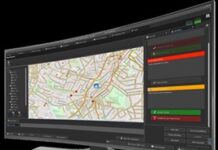
The results of Convergint’s first annual Voice of the Customer Benchmarking Survey reveals that the role of physical security professionals has grown increasingly complex, now requiring intensive IT skills in areas like cybersecurity and cloud computing.
The survey found that 72% of physical security professionals anticipate that their roles within their organisations will change in the next 1-2 years–with an increased emphasis on emerging technology, including artificial intelligence and machine learning, mobile credentialing, and autonomous solutions. The elevated status of physical security is also evident. Indeed, 35% of survey respondents noted that they report directly to the CEO or other c-level executives, demonstrating how physical and electronic security and risk management are now an organisational and strategic importance.
“There’s no doubt that the role of the physical security professional is changing–the traditional idea of a ‘security guard’ is being re-defined, so as security equipment and capabilities advance, the job has become more complex and tech-centric,” said Robert Van den Heuvel, Business Intelligence Manager, Convergint. “Business leaders must look at security and risk holistically and break down the siloes that exist between cyber and physical security systems—and the teams that lead them—to drive collaboration and keep their people and assets safe.”
Recognising the absence of peer-to-peer benchmarking in the physical security industry, Convergint Research & Insights conducted its first Voice of the Customer Benchmarking Survey in late 2022—analysing information from senior, global physical security professionals at the director and vice president level, at more than 70 of the largest industry leading organisations across healthcare, financial services, government, and utilities, among others. The report provides insights on staffing and organisational structure, budgeting and procurement, and trends in innovation and technological adoption.
Key survey findings revealed several areas of opportunity for security teams across all industries, including:
• Cloud is critical: More than 51% of security respondents reported that they don’t fully understand their organisation’s current cloud strategy. Cloud management must be a top priority for all security leaders, and involvement and collaboration between IT and physical security teams must be accelerated to reduce vulnerabilities from cloud devices.
• Cyber security shouldn’t be limited to IT: Only 4% of physical security teams are leading cyber security initiatives for their respective organisations, with another 28% teaming up with IT. 63% of respondents noted that they are not involved at all in cyber security at their organisation. Coordination between IT and physical security teams is critical to prevent attacks on cameras, sensors, and other mission-critical devices.
Defining ROI to demonstrate business value: 44% of survey respondents cited their innovation focus as utilising data and technologies to reduce labour expenses and optimising workflows and processes–however very few respondents were able to describe how they measure success for innovation projects. According to Convergint, there is an opportunity for physical security teams to demonstrate broader business value–from conversations around office and real estate footprint, to office utilisation to ensuring a safe work environment.
“The workplace has evolved dramatically over the last few years, resulting in a greater emphasis on health and safety,” said Van den Heuvel. “This is a watershed moment for our industry, given the advanced data that security systems can collect and analyse–physical security is now a highly technical role, focused on managing highly complex systems. By empowering these professionals with proper training and resources and prioritising cross-team collaboration, security systems can provide tangible business value, in the short- and long-term.”











